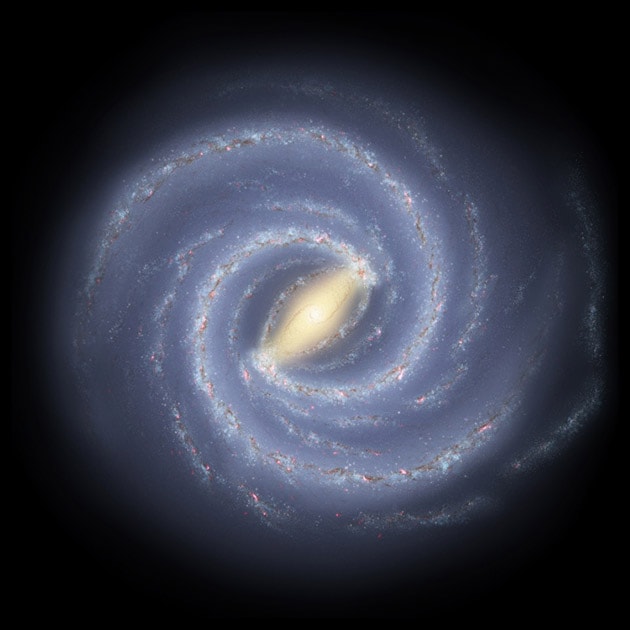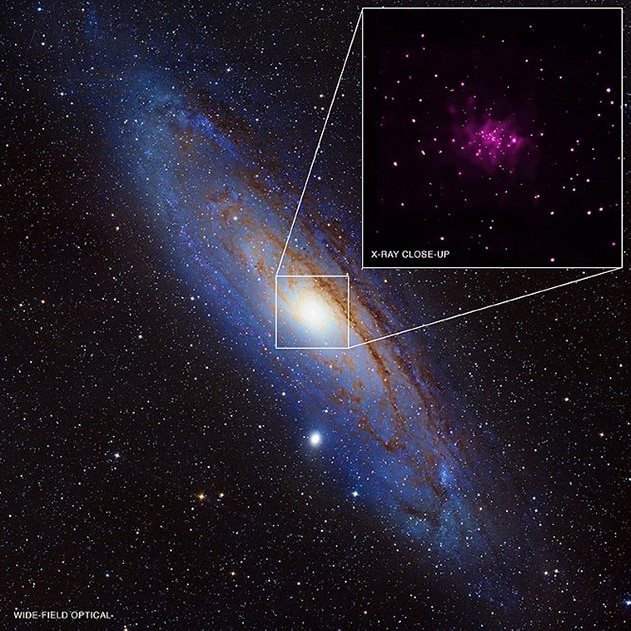
- Semiconductor Technology Now
Cross Talk
 |
Mie Nagata: By the way, is it possible to create an artificial black hole?
Mareki Honma: Some people say you can create minuscule, micro black holes. The theory is that you can use a device called an accelerator to crash particles at unbelievable speeds to create new particles, which also creates very small black holes. I don’t think it’s possible though.
Some of the particles out there in space contain far greater energy than can be obtained by an Earth-based accelerometer. And if the energy created by an accelerometer can create a black hole, then there must already be many micro black holes in the universe that would have sucked us in, so that we would not be alive. Because that has not actually happened, I don’t think it’s possible to create a black hole with the small amount of energy created by an accelerometer.
Mie Nagata: In Part A of this talk, we spoke about supermassive black holes being located at the center of galaxies. These galaxies can bump into each other, so we will actually see that happening someday, won’t we?
Mareki Honma: Yes. The universe itself is expanding, and there are groups containing multiple galaxies. As the galaxies within those groups are attracted to each other by gravity, they may get closer and closer until they collide. In fact, they say our own Milky Way galaxy (figure 2) will one day collide with the Andromeda galaxy*2 (figure 3).
Mie Nagata: And when that happens, when the supermassive black hole in the center of the Milky Way galaxy and the supermassive black hole in the center of the Andromeda galaxy combine, will they form an even larger supermassive black hole?
Mareki Honma: Yes, I think so. Black holes suck in anything and everything, so they just grow and grow.
Mie Nagata: And what will happen to the Earth then?
Mareki Honma: I don’t think there would be any effect on the Earth. The stars within galaxies are divided by huge distances, with not much between, so if we did collide with Andromeda, I think we would just notice more stars in the night sky. I don’t think there would be much of an effect on us.
 |
 |
Construction has begun on an extremely large next-generation radio telescope
Mie Nagata: Construction is currently underway on the Square Kilometer Array (SKA) (figure 4), isn’t it? This telescope will be even larger than the Event Horizon Telescope (EHT)*3.
Mareki Honma: The SKA is an extremely large next-generation radio telescope. It is being built through an international collaboration of more than 10 participating countries, including South Africa and Australia. The SKA is a giant telescope with total collection area of one square kilometer, consisting of an array of 2,000 15-meter diameter radio telescopes in South Africa and an array of hundreds of smaller telescopes in Australia. Japan is not an official member of the SKA project yet, but we hope to use the SKA to forge new frontiers in astronomy over the next decade.
Mie Nagata: What will we be able to see when it is completed?
Mareki Honma: To start with, black holes will be an important focus of observations. More interesting than that, though, is the ability to look for extra-terrestrials. We could use the 2,000 telescopes being constructed in South Africa, for example, to look at terrestrial exoplanets surrounding stars a few light years away. If there is any activity on those planets that uses radio waves, such as television, radio or communications, then we could capture any radio wave “leakage.” What this means is we could actually watch TV from our neighboring stars. It will take about a decade before we reach that level of performance, but even so, we are highly likely to learn within our lifetime whether or not there are any artificial radio waves emanating from our nearest planets. Even though I doubt there are...
 |
Footnotes
- *2
- Andromeda galaxy: Andromeda is a galaxy located approximately 2.5 million light-years from Earth. It is expected to collide with the Milky Way galaxy in about 4 billion years’ time.
- *3
- Event Horizon Telescope (EHT): The EHT is a telescope that operates on a short millimeter wavelength (mainly 1.3 mm) and makes VLBI observations from a base line length of 10,000 kilometers, which is almost the diameter of the Earth. This provides the best resolution ever achieved, equivalent to 3,000,000x vision. Observation data for the current black hole image was collected in 2017 from eight telescopes: APEX (Chile), ALMA (Chile), IRAM 30-meter Telescope (Spain), James Clerk Maxwell Telescope (Hawaii), Large Millimeter Telescope (Mexico), Submillimeter Interferometer (Hawaii), Submillimeter Telescope (Arizona), and South Pole Telescope (South Pole).



















